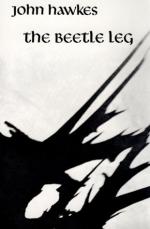|
This section contains 6,371 words (approx. 22 pages at 300 words per page) |

|
SOURCE: "Male Heterosexuality in Hawkes's 'The Passion Artist," in Twentieth Century Literature, Vol. 36, No. 4, Winter, 1990, pp. 403-18.
In the following essay, Murphy evaluates John Hawkes's The Passion Artist as a work that "explores the fantasies, manifestations, doubts, and transformations of male heterosexuality in the context of a world besieged by hatred, fear, and shame. "
A critical sequence in John Hawkes's fiction: The Blood Oranges (1970) to Virginie: Her Two Lives (1981), presents a radical theory of male heterosexuality. During this ten-year span Hawkes also published Death, Sleep and the Traveler (1973), Travesty (1976), and The Passion Artist (1978).' The first three of these novels make up what Hawkes came to call "the sex triad."
As one of the few contemporary male authors affected directly by the feminist movement, Hawkes is at the forefront of the male response. His fiction examines such issues as: domination/submission, father-daughter incest, pornography, the Lolita complex, men's...
|
This section contains 6,371 words (approx. 22 pages at 300 words per page) |

|


